Germany
Continental Identity: European.
Literacy Rates:
- 99% in males;
- 99% in females.
Real GDP growth rate: 1.3%.
Labor force by occupation:
- agriculture: 2.4%;
- industry: 29.7%;
- services: 67.8% (2005).
Unemployment rate: 7.8%.
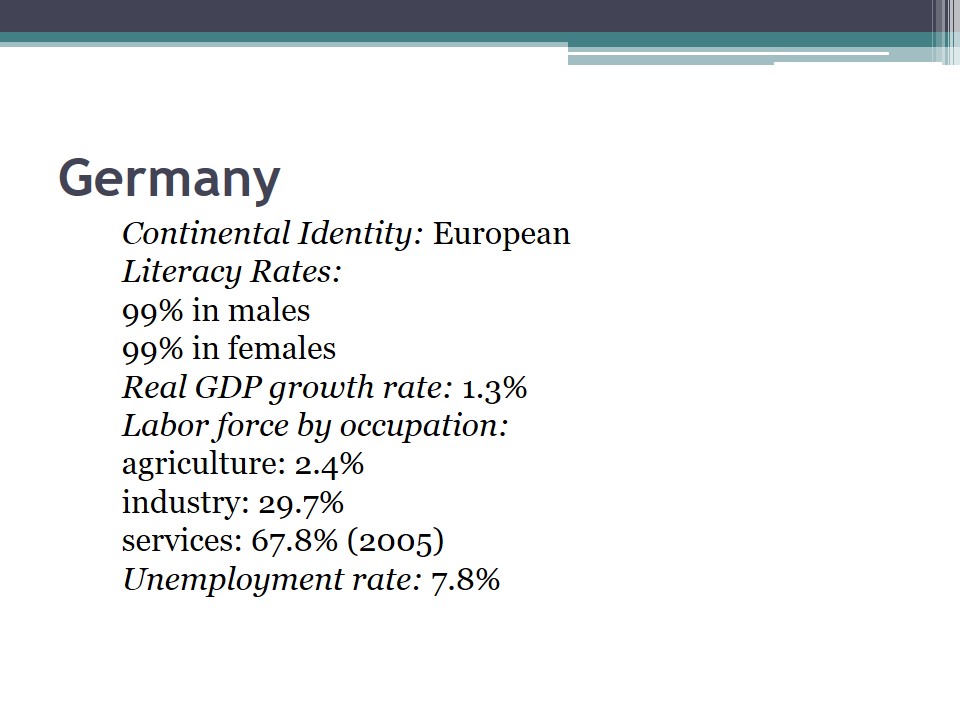
People’s Republic of China
Continental Identity: Asian.
Literacy Rates:
- 95.1% in males;
- 86.5% in females.
Real GDP growth rate: 9%.
Labor force by occupation:
- agriculture: 43%;
- industry: 25%;
- services: 32%.
Unemployment rate: 4%.
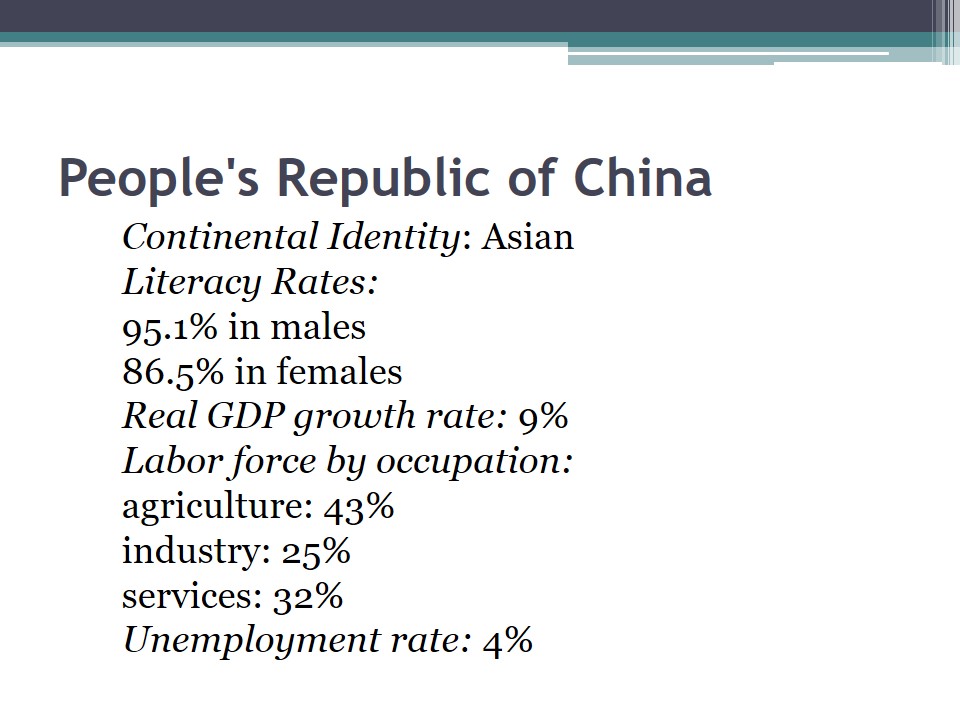
Elaboration on Role and Recognition of women in Germany and China
Role and Recognition of women in Germany
- The role of women in Germany is one that is valued and given credit to.
- The government supports the education and development of women.
- During and following the Second World War, women have become an integral part of the German workforce.
- Since the 1980s, the number of women and men in universities has remained almost equal.
- The German woman is strong and composed in her professional persona.
- While German women may be active in pursuing professional development, the proportion of German women in top managerial positions remains lesser than it is in the United States.
- German laws are designed to equally facilitate the women’s role as a mother as they are to encourage women to join the workforce. For example: An employer is required to pay a women wages and provide full benefits for a period of two months following birth.
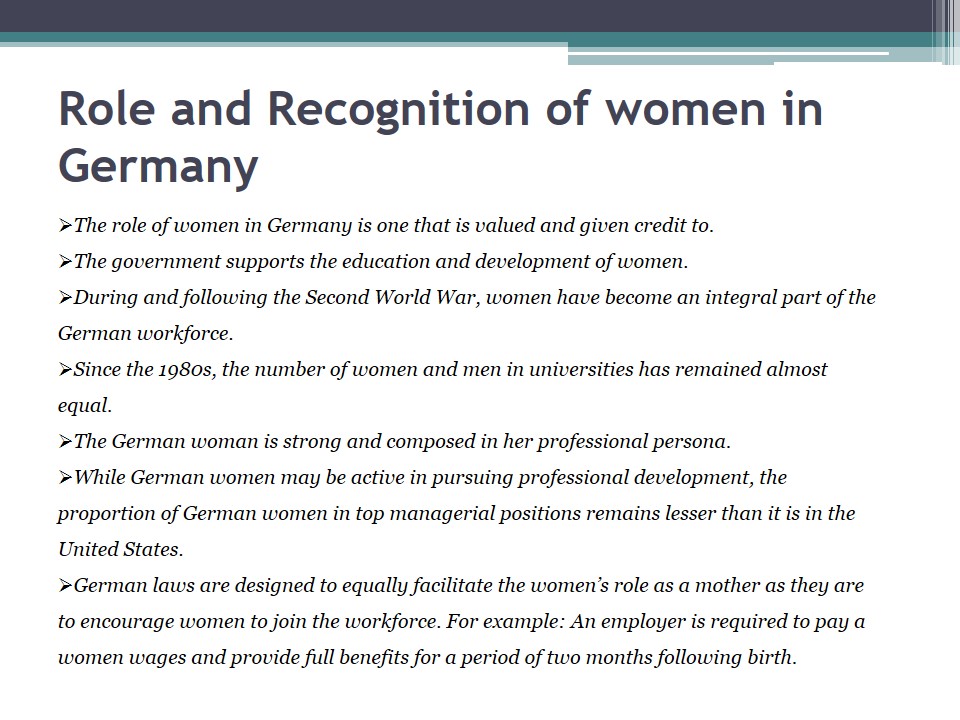
Role and Recognition of women in China
- Chinese women go through more stress than Chinese men.
- The number of women to men is decreasing in China and the difference is expected to increase to extensive heights by 2020.
- Women from rural china tend to come to the cities to develop their careers. Career development comes as an undeniable and imperative aspect to women.
- The degree of confidence held by a Chinese woman is often related directly to her social status and location.
- Chinese women have been rapid in their acquisition of equal rights to men.
- The married Chinese woman is almost always considered to be the one who is in charge of taking care of the house and the children, regardless of her position as a working woman or a housewife.
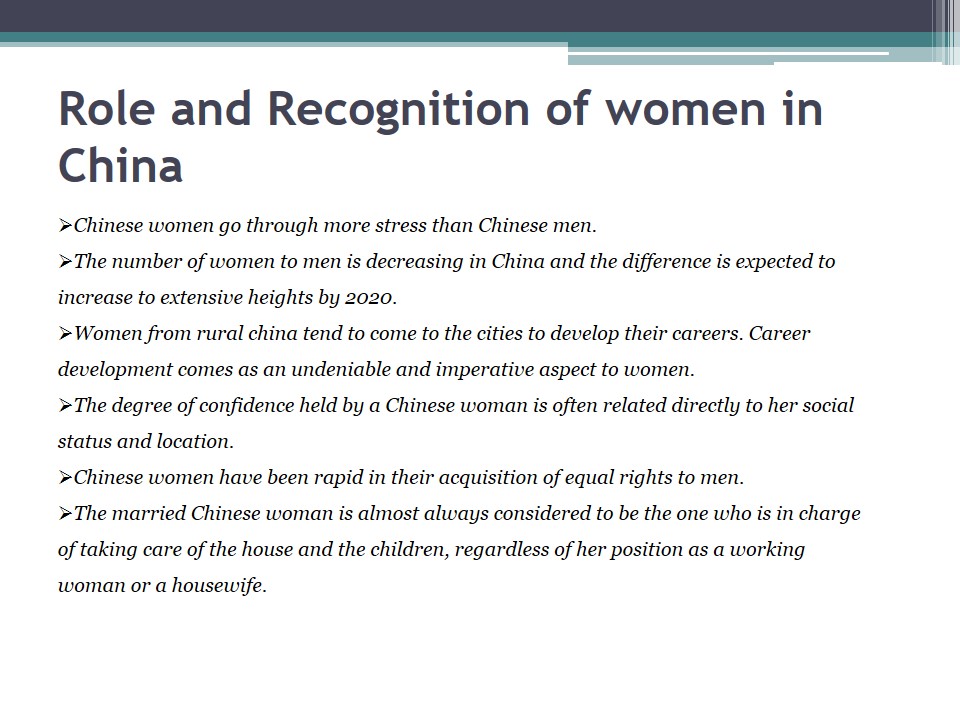
Elaboration on Direct Communication in Germany and China
Direct Communication in Germany
- German workplace dressing is generally kept conservative and highly formal.
- Small talk is kept to a brief minimum in the German workplace.
- Printed materials are generally printed in both English and German.
- Confrontational behavior is generally avoided and is considered to be anything but productive.
- Direct communication is frowned upon if it violates the hierarchical lines.
- An open-door policy is very rare to find and communication adheres to formal guidelines.
- German employees tend to feel insecure in the workplace unless they are sure of prospects for career development and planning.
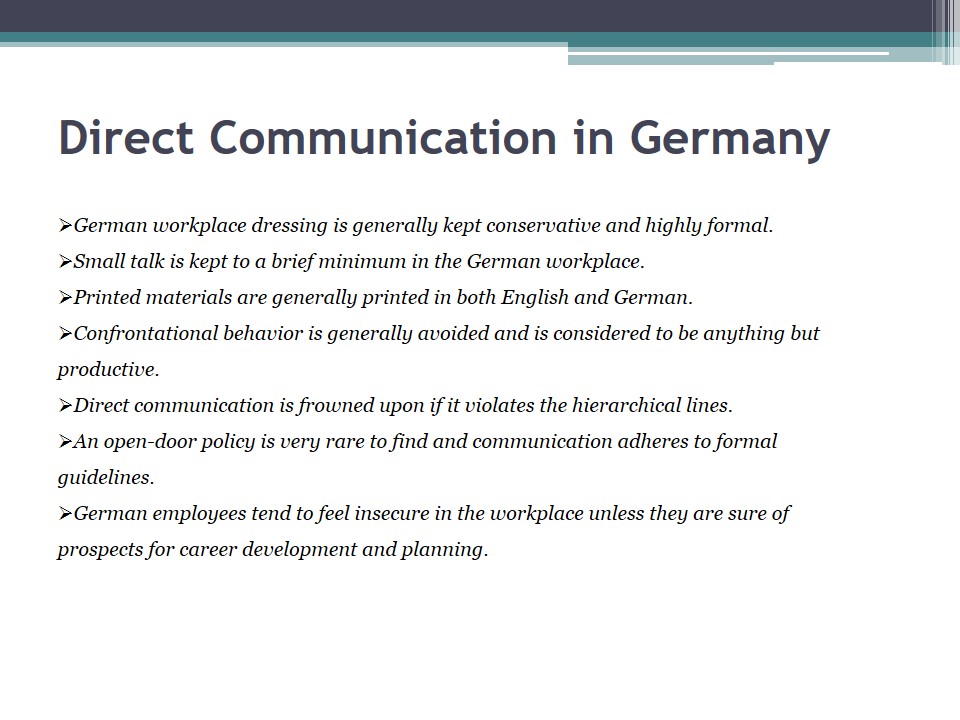
Direct Communication in China
- The Chinese workplace generally gives preference to direct and face-to-face communication rather than telephonic or written forms of communication.
- Business relationships are very rarely subjected to socialization and social gatherings are rarely subjected to discussions on business.
- During meetings in the Chinese workplace, only department heads converse as representatives of their departments.
- The agenda of a conversation in the Chinese workplace is taken to be a starting point to raise other issues from rather than being considered the central focus of the discussion.
- Bright colors are generally disliked in the Chinese workplace and conservative, formal attire is given preference.
- Prolonged direct eye contact in the Chinese workplace can be considered to be a sign of intimidation.
- In scenarios where a large number of people are present in the same room, eye contact is avoided to facilitate the provision of privacy to the present personnel.
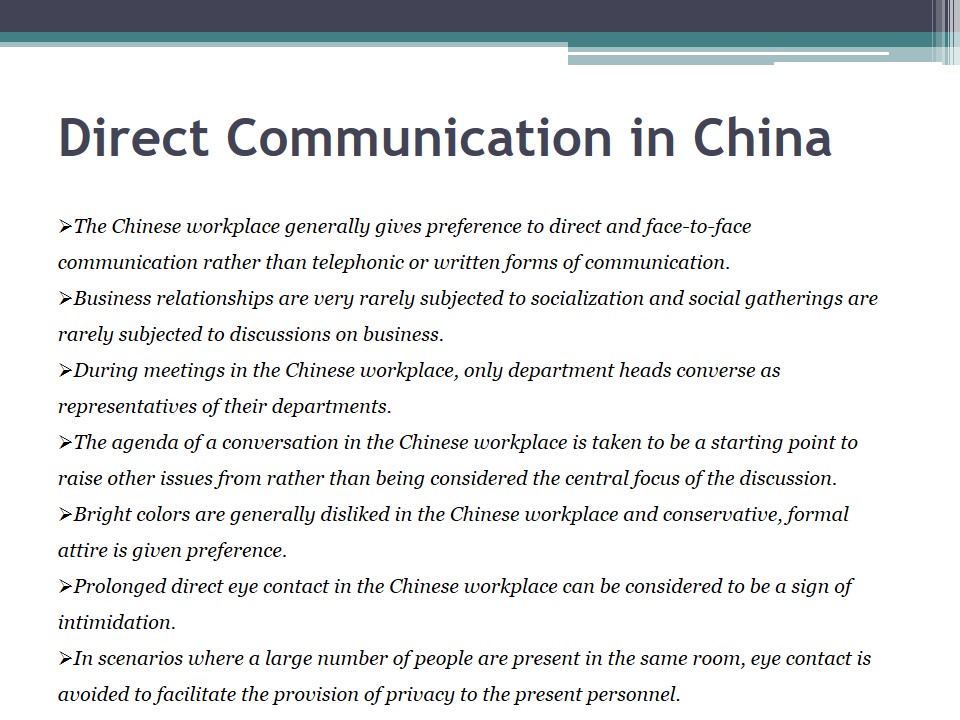
Reference List
Allen, C. (2006). Traditions weigh on China’s women. Web.
Central Intelligence Agency. (2009). China. Web.
Central Intelligence Agency. (2009). Germany. Web.
kwintessential. (2009). China – Language, Culture, Customs and Etiquette. Web.
Kwintessential. (2009). Germany – Language, Culture, Customs and Business Etiquette. Web.
Nees, G. (2000). Germany: Unraveling an Enigma. Intercultural Press.